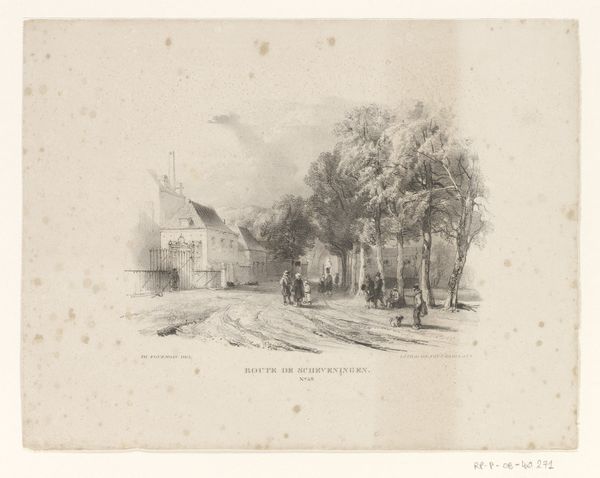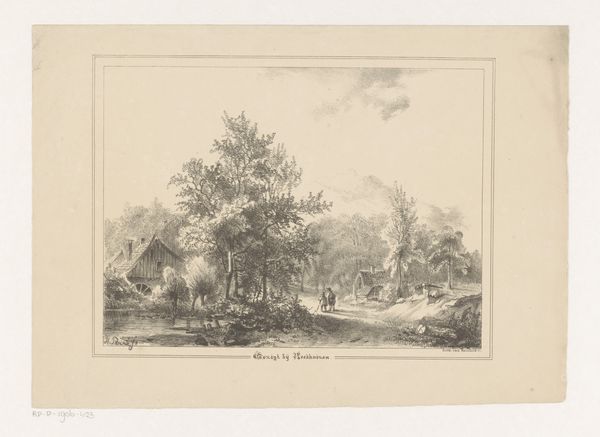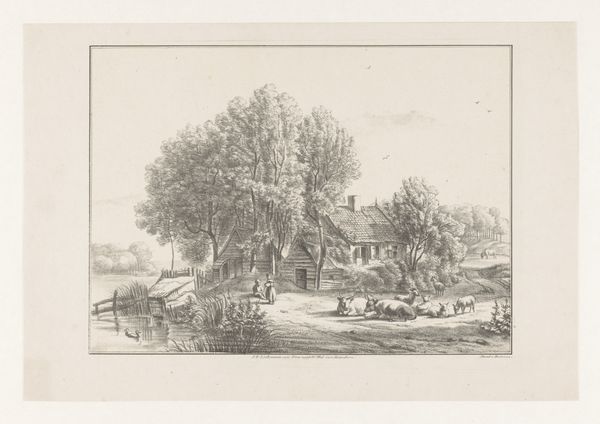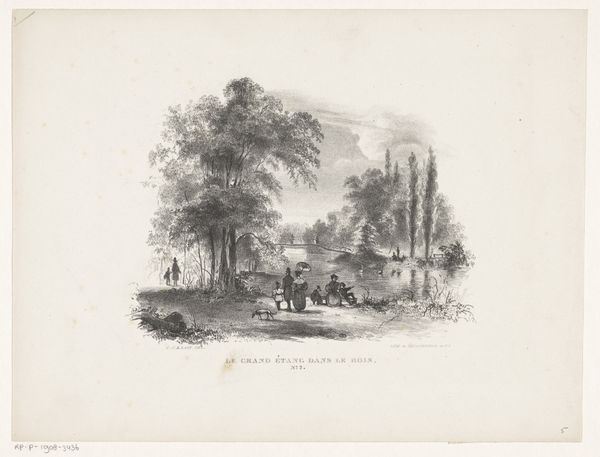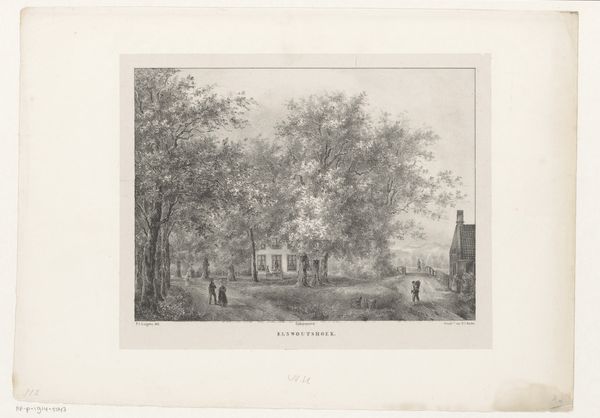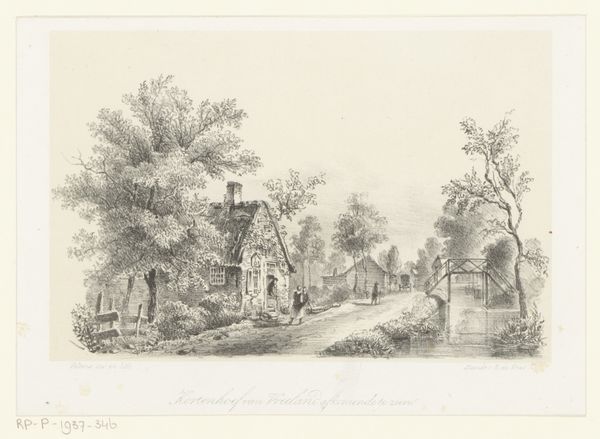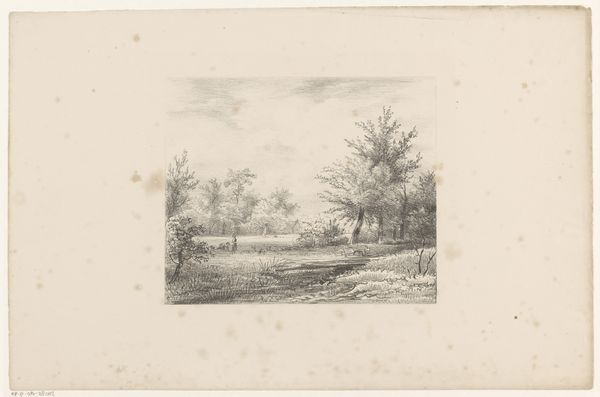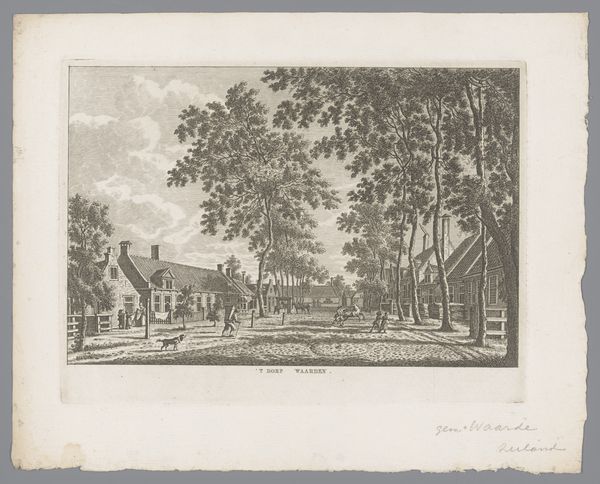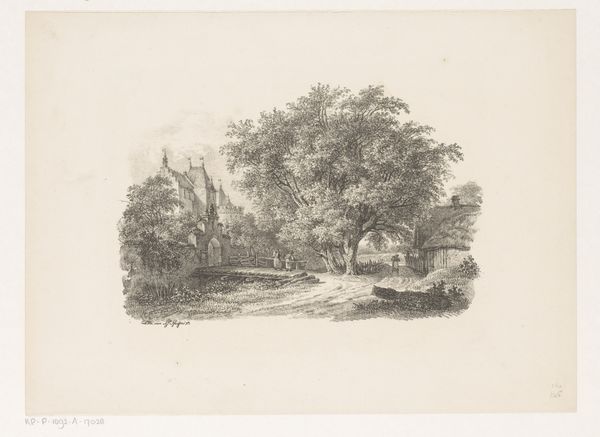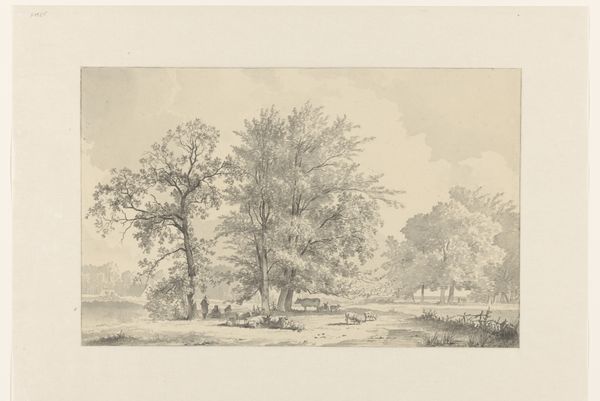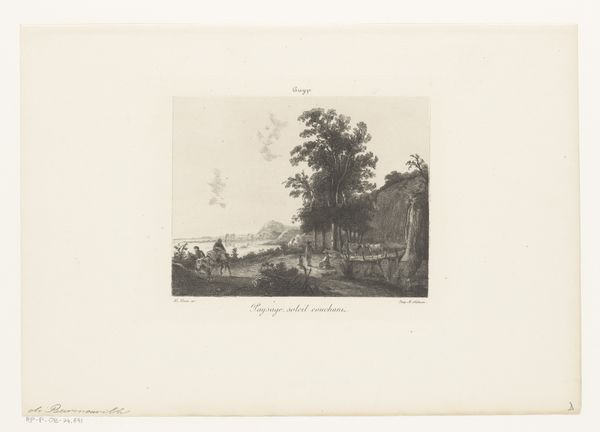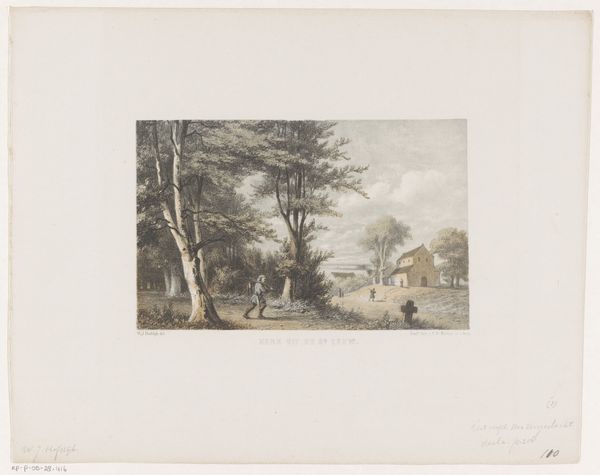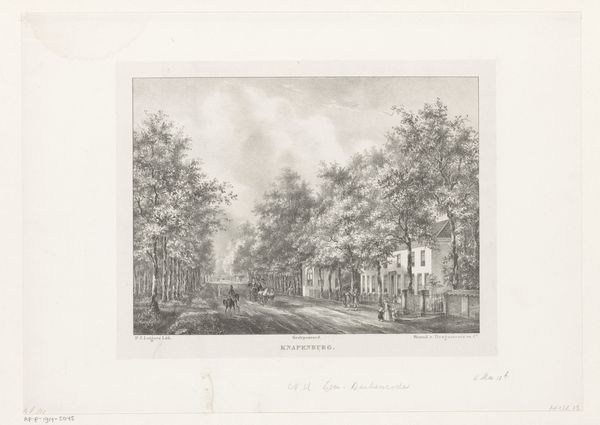
print, engraving
# print
#
landscape
#
genre-painting
#
engraving
#
realism
Dimensions: height 241 mm, width 315 mm
Copyright: Rijks Museum: Open Domain
Editor: Here we have “Weg naar Scheveningen,” or “Road to Scheveningen,” an engraving by Théodore Fourmois made sometime between 1827 and 1871. The figures are very small, which is interesting considering the overall landscape view. How do you interpret this work? Curator: What I see here is a record of production. Engravings like this were primarily commercial. Note how it replicates the Realist style, but mass production allowed broader consumption. Did fine art or popular demand dictate the making? I'm also interested in the division of labor: who designed it, who engraved it, and who printed it? How did their individual inputs affect the final output, and for whose consumption? Editor: So you’re focusing less on the idyllic scene, and more on the process of getting the artwork to the people? Curator: Exactly. Look at the textures created by the engraving. Consider the skill and time involved. It elevates the craft. Was Fourmois challenging the established hierarchies, blurring the line between "high art" and accessible printed material? And, what social structures made such dissemination necessary or desirable? Editor: It’s almost like it's democratizing art. It brings up so many questions. Curator: Indeed! And let’s also consider what impact affordable art had on social consciousness in the Netherlands at the time, and beyond. It certainly shifts our thinking from artistic inspiration to material access and broader socio-economic impact, don’t you think? Editor: Yes, absolutely. I definitely see the work in a completely different way now. Thank you!
Comments
No comments
Be the first to comment and join the conversation on the ultimate creative platform.
